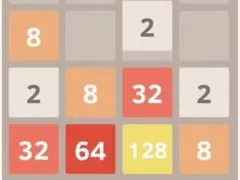SPIDER SOLITAIRE
SIMILAR GAMES
Description
Spider Solitaire - Unblocked Games G+
About Spider Solitaire - Unblocked Games G+
We are delighted to offer a profound exploration into the intricate world of Spider Solitaire, a universally cherished card game that has captivated players for generations. This detailed guide is meticulously crafted to provide an all-encompassing understanding of Spider Solitaire, delving deep into its foundational rules, strategic nuances, and even its fascinating historical journey. Whether you are stepping into the realm of Spider Solitaire for the very first time or you are a seasoned player seeking to refine your mastery, this resource is designed to be your ultimate companion. We are committed to ensuring that your experience with Spider Solitaire is both educational and thoroughly enjoyable, equipping you with the knowledge and skills to conquer its challenges.
The Enduring Appeal of Spider Solitaire
The enduring appeal of Spider Solitaire lies in its perfect blend of chance and skill. Unlike simpler solitaire variations, Spider Solitaire presents a more complex puzzle that rewards careful planning and strategic foresight. The thrill of uncovering hidden cards, the satisfaction of clearing entire columns, and the ultimate triumph of completing the game provide a uniquely rewarding experience. Its accessibility, requiring only a standard deck of cards (or a digital representation), has contributed to its widespread popularity. The game’s inherent challenge, coupled with the potential for satisfying victories, makes it a persistent favorite for those seeking mental stimulation and a welcome respite from daily routines. We understand that the allure of Spider Solitaire extends beyond mere entertainment; it is a game that sharpens the mind and provides a sense of accomplishment with every successfully completed tableau.
Understanding the Fundamentals of Spider Solitaire
At its core, Spider Solitaire is a game played with two standard 52-card decks, totaling 104 cards. The objective is to build sequences of cards in descending order, from King down to Ace, within the same suit, and remove them from the tableau. The game is played on a tableau consisting of ten piles. The first four piles contain six cards each, while the remaining six piles contain five cards each. Crucially, the top card of each pile is dealt face up, while the rest remain face down until they are revealed through gameplay. This initial setup is fundamental to understanding the strategic considerations that will unfold as you play Spider Solitaire. We emphasize that a thorough grasp of this initial card distribution is the first step towards developing effective gameplay.
The Goal of the Game
The ultimate goal in Spider Solitaire is to successfully assemble eight complete sequences of cards, running from King down to Ace, within the same suit. Each of these completed sequences, once formed, is then removed from the tableau. When all 104 cards have been successfully arranged and removed in these eight sequences, the game is won. This intricate process demands a strategic approach to card movement and a keen eye for potential sequences. We believe that understanding this overarching objective provides the necessary direction for every move you make within the game.
Card Movement Rules in Spider Solitaire
The mechanics of moving cards in Spider Solitaire are governed by specific rules designed to create the game's unique challenge. Players can move a single card from the top of one pile to the top of another pile, provided that the destination card is one rank higher and of the same suit. For example, a 7 of Spades can be moved onto an 8 of Spades. Furthermore, sequences of cards, as long as they are in descending order and of the same suit, can be moved together as a single unit. This ability to move contiguous sequences is a cornerstone of advanced Spider Solitaire strategy. When a tableau pile becomes empty, any card or sequence of cards can be moved into the vacant space. This is a critical rule, as it opens up possibilities for reorganizing the tableau and revealing hidden cards. We have meticulously analyzed these movement rules to ensure clarity and provide a solid foundation for your gameplay.
Dealing New Cards
A significant element of Spider Solitaire involves the process of dealing new cards. When a player has dealt all cards from the stock, they can click on the stock pile to deal ten additional cards, distributing one card face up onto each of the ten tableau piles. This action can only be performed when no tableau piles are empty. This rule introduces an element of calculated risk and strategic timing; deciding when to deal new cards can significantly impact the game's progression. We advise players to consider the state of the tableau carefully before initiating a deal, as it can either open up new opportunities or exacerbate existing challenges.
Understanding Suits and Ranks
In Spider Solitaire, the concept of suits and ranks is paramount. The game is played with cards from two decks, but the objective is to build sequences within a single suit. Therefore, a 9 of Hearts can only be placed on a 10 of Hearts, and not on a 10 of Spades, Clubs, or Diamonds. The ranks of the cards proceed in descending order: King, Queen, Jack, 10, 9, 8, 7, 6, 5, 4, 3, 2, Ace. An Ace is the lowest rank and can only be placed at the bottom of a sequence. Completing a full sequence from King down to Ace is the ultimate objective. We have ensured that the importance of suit and rank coherence is explicitly stated, as it forms the backbone of successful Spider Solitaire gameplay.
Variations of Spider Solitaire
While the core rules remain consistent, Spider Solitaire is often played with varying degrees of difficulty, primarily distinguished by the number of suits used in the game. Understanding these variations is crucial for players looking to tailor the challenge to their skill level.
One Suit Spider Solitaire
This is considered the easiest variation of Spider Solitaire. In this version, all cards used are of the same suit (e.g., all Spades, or all Hearts). This significantly simplifies the task of building descending sequences, as players do not need to worry about matching suits when moving cards. The objective remains the same: to form eight complete King-to-Ace sequences. We find that this variation is an excellent starting point for beginners to familiarize themselves with the game mechanics before progressing to more challenging versions.
Two Suit Spider Solitaire
This is the most commonly played version and offers a moderate level of difficulty. In Two Suit Spider Solitaire, two different suits are used, typically Spades and Hearts, or Clubs and Diamonds. Players must still build descending sequences, but they must also ensure that the cards within each sequence belong to the same suit. This introduces a layer of strategic complexity, as players must carefully consider which cards can be moved together and how to best manage the two distinct suits on the tableau. We recognize this variation as a balanced challenge that hones strategic thinking without being overly daunting.
Four Suit Spider Solitaire
This is the most challenging and complex variation of Spider Solitaire. Here, all four standard suits (Spades, Hearts, Clubs, and Diamonds) are used in the game. Players must build eight complete King-to-Ace sequences, each consisting of cards from a single suit. The increased number of suits means that the tableau will be a more intricate mix of different cards, making it significantly harder to find and form valid sequences. Strategic planning and a deep understanding of card probabilities are essential for success in Four Suit Spider Solitaire. We acknowledge that this variation is for the truly dedicated player, offering a supreme test of skill and patience.
Strategies for Mastering Spider Solitaire
Success in Spider Solitaire is not solely about luck; it requires thoughtful strategy and a systematic approach. We have compiled a set of proven strategies that can significantly enhance your gameplay and increase your chances of victory.
Prioritize Revealing Face-Down Cards
One of the most crucial aspects of Spider Solitaire strategy is to uncover as many face-down cards as possible, as early as possible. Face-down cards represent unknown possibilities and potential obstructions. By strategically moving visible cards to reveal the hidden ones, you gain a clearer picture of the tableau and increase your options for forming sequences. We advocate for making moves that directly lead to uncovering a face-down card whenever a viable opportunity presents itself.
Empty Tableau Piles Strategically
An empty space in the tableau is a powerful asset in Spider Solitaire. It provides a flexible location to move cards or entire sequences, allowing for significant reorganization. Aim to create empty piles by strategically moving cards. However, be judicious about what you move into an empty pile; it is often best to move a single card to keep your options open. We emphasize that having an empty tableau pile can be a game-changer, offering the freedom to maneuver cards that would otherwise be stuck.
Don't Be Afraid to Move Sequences
While moving single cards is fundamental, the ability to move entire sequences of cards in descending order and of the same suit is a key strategic element. Learn to identify and utilize these sequences to your advantage. Sometimes, moving a longer sequence might seem less immediate, but it can be crucial for unlocking blocked cards or setting up a more advantageous arrangement on the tableau. We encourage players to develop an eye for these contiguous sequences and use them to consolidate their progress.
Consider the Impact of Dealing New Cards
As mentioned earlier, dealing new cards from the stock can be a double-edged sword. While it introduces more cards to play with, it can also clutter the tableau if not managed carefully. Try to clear as much space as possible and make sensible moves before dealing. The ideal time to deal is often when you have a reasonably organized tableau and are looking for specific cards to complete sequences. We advise players to assess the current state of the game and consider the potential consequences before clicking the stock.
Focus on Completing Sequences
While organizing the tableau is important, never lose sight of the ultimate goal: completing King-to-Ace sequences. When you see an opportunity to move cards that will bring you closer to finishing a sequence, prioritize that move. Completing sequences not only gets you closer to winning but also removes cards from play, simplifying the tableau and reducing the complexity of the remaining game. We believe that a focused approach on sequence completion is the most direct path to victory in Spider Solitaire.
Save Aces and Kings Wisely
Aces are the lowest cards and are often the last to be placed in a sequence. Kings are the highest and are the starting point. Pay attention to where you place Aces; they can often be moved to complete sequences. Similarly, Kings can be used to start new sequences or extend existing ones. Strategic placement of these critical cards can significantly influence the game's outcome. We suggest careful consideration when moving Aces and Kings, as their positions are often pivotal.
The Historical Context of Spider Solitaire
The origins of Spider Solitaire, like many card games, are somewhat shrouded in the mists of time. However, it is widely believed that the game evolved from earlier forms of solitaire and has been a popular pastime for well over a century. The name "Spider" is thought to be a reference to the eight legs of a spider, mirroring the eight sequences that players aim to complete in the game. The game gained significant traction with the advent of personal computers and digital gaming, which made it readily accessible to a global audience. We find it fascinating to trace the evolution of such a captivating game and appreciate its journey from traditional card tables to the digital interfaces of today. The enduring popularity of Spider Solitaire is a testament to its timeless design and the inherent pleasure it offers players.
Spider Solitaire as a Cognitive Exercise
Beyond its entertainment value, Spider Solitaire serves as an excellent cognitive exercise. Playing the game requires players to engage in a variety of mental processes, including:
- Problem Solving: Each move presents a mini-problem to solve. Players must analyze the current state of the tableau and determine the most advantageous next step.
- Strategic Planning: Successful gameplay necessitates long-term planning. Players need to anticipate future moves and consider how current decisions will impact the game down the line.
- Pattern Recognition: Identifying potential sequences and recognizing patterns in card arrangements are crucial skills developed through playing Spider Solitaire.
- Memory and Concentration: Players must keep track of which cards have been played, which are face down, and the overall state of the tableau, demanding sustained concentration.
- Decision Making Under Uncertainty: The element of hidden cards introduces an aspect of uncertainty, requiring players to make decisions based on incomplete information.
We firmly believe that engaging in games like Spider Solitaire can contribute to maintaining cognitive function and agility. The mental discipline required to navigate its complexities offers a rewarding challenge for the mind.
Embark on Your Spider Solitaire Journey
We have endeavored to provide a comprehensive and detailed guide to Spider Solitaire. From understanding the fundamental rules and exploring various difficulty levels to implementing effective strategies and appreciating its historical context, this article is designed to empower you. Whether you are looking for a casual diversion or a challenging mental workout, Spider Solitaire offers a rewarding experience. We encourage you to apply the knowledge gained here, experiment with different approaches, and most importantly, enjoy the timeless game of Spider Solitaire. Your journey to mastering this classic card game begins now, and we are thrilled to be a part of it.
Spider Solitaire, a classic card game, challenges players to arrange a deck of cards in order using minimal moves. The objective is to create descending sequences from King to Ace within the tableau columns. Once a sequence is completed, it is automatically removed from the tableau, the goal being to clear all cards. The game is renowned for its ability to combine both luck and strategy, giving players the chance to plan their moves ahead and adapt their strategy based on the situation of the cards.
Refine Skills with Varied Difficulties
Spider Solitaire offers varying levels of difficulty by providing one, two, or four suits to play with, which adjusts the complexity and strategy required to win. Beginners might start with the one-suit game to grasp the basic mechanics, while more experienced players can challenge themselves with the four-suit version, which requires more strategic planning and foresight. This versatility makes Spider Solitaire an enduring favorite among solitaire games, appealing to both casual players looking for a relaxing pastime and more competitive players seeking a mental exercise.















































